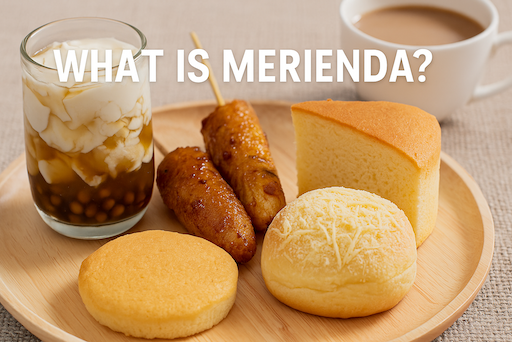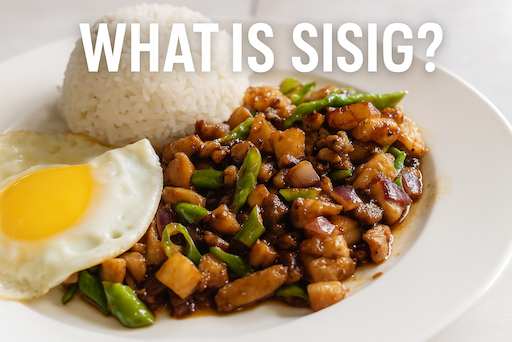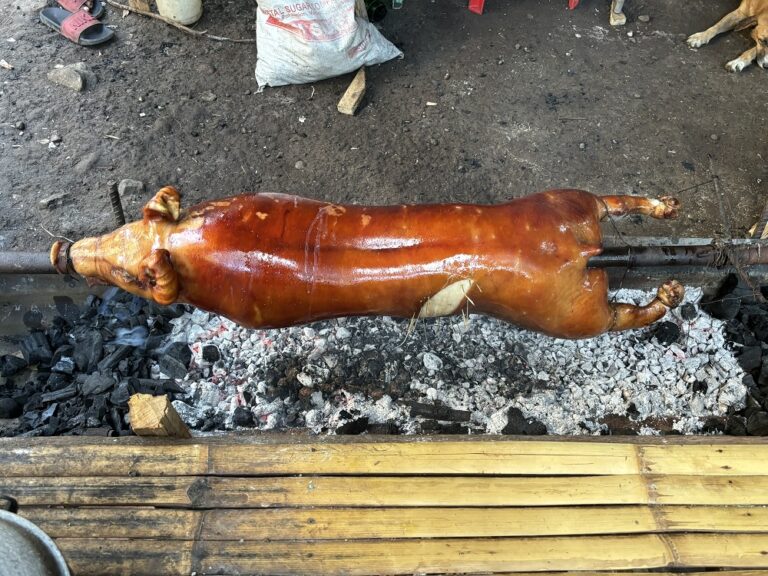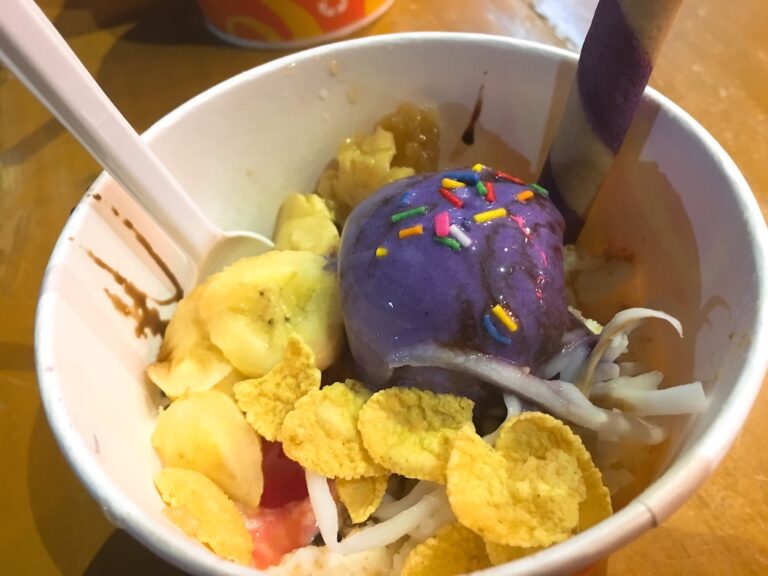What Is Merienda? Discover the Filipino Snack Culture Between Meals
Contents
“What Is Merienda? Discover the Filipino Snack Culture Between Meals”From Banana Cue to Halo-Halo: A Guide for Hungry Travelers and Students in Cebu
🧁 What Is Merienda?
Discover the Filipino Snack Culture Between Meals
Walk down any street in the Philippines at 10 a.m. or 3 p.m., and you’ll notice something curious:
People are eating. Again. And they’re loving it.
It’s not breakfast.
It’s not lunch.
It’s not quite dinner either.
Welcome to the world of merienda — the uniquely Filipino tradition of enjoying a snack between meals, often shared with friends, coworkers, or classmates. It’s part habit, part ritual, and completely delicious.
In Filipino culture, eating isn’t just about survival.
It’s about connection, comfort, and celebration. Merienda is a perfect example of this philosophy. It’s that sweet (or savory) pause in your day — a quick bite, a hot drink, and a moment to breathe.
If you’re studying in Cebu or spending any time in the Philippines, you’ll quickly notice that merienda is everywhere:
-
Office workers gathering around a vendor with banana cue
-
Students grabbing pandesal and iced tea after class
-
Families sharing halo-halo on a hot afternoon
-
Street corners alive with the sound of deep fryers and cheerful vendors
🕒 Merienda typically happens twice a day — once in the mid-morning (around 10am), and again in the mid-afternoon (around 3pm). And yes, you can absolutely have it twice. No judgment here.
Unlike Western “snack time,” merienda isn’t rushed or mindless. It’s often social, sometimes sentimental, and always tied to Filipino identity.
In this guide, we’ll explore:
-
What merienda means to Filipinos
-
The most iconic merienda snacks (from banana cue to taho)
-
Where to try them in Cebu
-
And why every visitor should experience this tasty little pause in the day
Whether you’re a digital nomad in IT Park, a language student at 3D ACADEMY, or a backpacker exploring the city — don’t skip merienda. It’s where the heart of the culture lives.
🥐 What Exactly Is Merienda?
More Than Just a Snack — It’s a Daily Ritual
In most countries, snacks are a casual afterthought — something quick between real meals, often eaten on the go.
But in the Philippines, merienda is something more. It’s intentional, anticipated, and even celebrated.
🇵🇭 A Cultural Staple
The word merienda comes from Spanish influence, but the concept has fully evolved into something uniquely Filipino.
In local life, merienda is built into the daily rhythm:
-
Morning merienda (around 10:00 a.m.): a break between breakfast and lunch
-
Afternoon merienda (around 3:00 p.m.): a refresh before dinner
It’s not just for kids. Adults take merienda seriously — at work, in schools, at home, and even in government offices.
☕ What It Looks Like
Merienda can be as simple as a piece of bread and coffee, or as elaborate as a plate of deep-fried banana, sticky rice cakes, or savory pancit.
Some people eat standing next to a street vendor. Others enjoy it in air-conditioned cafés with free Wi-Fi.
🍽️ It’s not about how fancy it is — it’s about slowing down, even just for 15 minutes.
👨👩👧👦 Social by Nature
Merienda is often shared:
-
Between classmates during study breaks
-
Among coworkers in the office pantry
-
With family at home, often with hot chocolate or salabat (ginger tea)
It’s a chance to bond, gossip, recharge, or simply enjoy food together without the formality of a full meal.
💬 “Kain tayo!” (Let’s eat!) is one of the most common Filipino phrases — and merienda is when you’ll hear it most.
Now that you understand what merienda is, let’s take a bite out of the most iconic Filipino snacks you’ll find in Cebu.
➡️ Next: Popular Merienda Foods You Should Try in the Philippines
🍡 Popular Merienda Foods You Should Try in the Philippines
Sweet, Savory, and Always Satisfying
Merienda in the Philippines isn’t limited to just cookies or coffee.
It’s a whole category of beloved snacks — many of which you won’t find anywhere else in the world.
From deep-fried bananas to steamed rice cakes, from salty noodles to cold, colorful desserts, here are the must-try merienda treats you’ll likely encounter in Cebu.
🍌 SWEET SNACKS
1. Banana Cue
-
Deep-fried caramelized bananas on a stick
-
Crispy outside, soft inside, coated with brown sugar
-
Best eaten fresh and hot from street vendors
2. Turon
-
Spring roll wrapper filled with banana (and sometimes jackfruit), then fried
-
Crunchy, sweet, and slightly addictive
3. Taho
-
Warm soft tofu with syrup and tapioca pearls
-
Usually sold by vendors carrying metal buckets and calling out “Tahoooo!” in the morning
4. Kutsinta & Puto
-
Filipino steamed rice cakes, sometimes topped with coconut
-
Mildly sweet, soft, and perfect with coffee or tsokolate (Filipino hot chocolate)
5. Halo-Halo
-
Crushed ice, evaporated milk, and a mix of sweet beans, fruit, jellies, and ice cream
-
Cold, colorful, and wildly popular on hot days
🍜 SAVORY SNACKS
6. Pandesal
-
Filipino bread roll, slightly sweet and very soft
-
Often eaten with cheese, peanut butter, or eggs
-
A classic merienda in homes and school cafeterias
7. Lumpiang Togue
-
Fried spring rolls filled with bean sprouts and vegetables
-
Crispy, garlicky, and served with vinegar sauce
8. Pancit Canton
-
Stir-fried noodles with vegetables and meat
-
Heavy enough to feel like a mini-meal
9. Empanada
-
Pastry filled with meat, vegetables, or cheese
-
Inspired by Spanish cuisine, now fully “Filipino-fied”
🧃 DRINKS
-
Sago’t Gulaman: brown sugar syrup with tapioca and jelly
-
Salabat: traditional ginger tea
-
Iced milo or milk tea: popular among students
-
Barako coffee or 3-in-1 instant coffee: available at every corner store
📝 Tip: Merienda snacks are usually affordable — you can get most of these for $0.50 to $2 each.
🗺️ Where to Enjoy Merienda in Cebu
From Street Corners to Hotel Buffets — Snack Time, Cebu Style
In Cebu, merienda isn’t limited to one kind of place.
You’ll find it on street corners, in cozy bakeries, modern cafés, busy malls — even in five-star hotels.
Here’s where to enjoy your Filipino snack break, no matter your style or budget:
🥖 1. Local Bakeries (Panaderia)
🗺️ Found in every neighborhood
-
Affordable, nostalgic, and delicious
-
Try pandesal, Spanish bread, ube cheese rolls, or ensaymada
-
Grab a piece of bread and a sachet of 3-in-1 coffee — instant merienda
💰 Budget: ₱5–20 per item
📌 Where: Julie’s Bakeshop, Pan de Manila, Budong’s Bakery
🛒 2. Mall Food Courts & Chains
🗺️ Ayala Center Cebu / SM Seaside / Robinsons Galleria
-
Mix of Filipino fast-food and snack stalls
-
Try Chowking (lumpia, halo-halo), Red Ribbon (cakes), or Goldilocks (puto, kutsinta)
-
Comfortable seating and AC — great for study breaks
💰 Budget: ₱50–150
☕️ Bonus: Most have coffee or milk tea shops nearby
🍢 3. Street Vendors & Market Stalls
🗺️ Carbon Market, Colon Street, outside schools & churches
-
Best place to try banana cue, turon, biko, kutsinta, or taho
-
Vendors often roll in around 10am and 3pm, the classic merienda times
-
Not fancy — but full of flavor
💰 Budget: ₱10–30
⚠️ Pro tip: Bring small bills and coins
🍰 4. Cafés & Coffee Shops
🗺️ IT Park / Mango Square / Ayala terraces
-
Local and international cafés offer sweet or savory pastries
-
Look for La Marea (choco lava cake!), Bo’s Coffee, or The Coffee Bean & Tea Leaf
-
Wi-Fi, aircon, and cozy seats make them popular with students & nomads
💰 Budget: ₱150–300
🧁 Perfect for “merienda with a laptop”
🏨 5. Hotel Merienda Buffets & Afternoon Teas
🗺️ Marco Polo Plaza Cebu / Radisson Blu / Waterfront Lahug
-
A luxurious take on merienda: buffet-style snacks, cakes, Filipino delicacies
-
Some offer traditional native delicacies + Western desserts
-
Ideal for special days, meetups, or a solo splurge
💰 Budget: ₱500–800 per person
🍽️ Marco Polo’s Café Marco or Radisson’s Feria are local favorites
📝 Final Tip
No matter your budget or travel style, there’s a merienda for you in Cebu.
Whether it’s a ₱10 banana cue from a street cart or a ₱700 merienda buffet in a hotel, the joy of snacking between meals is deeply woven into everyday Filipino life.
🎯 Final Thoughts: Why Merienda Is More Than Just a Snack
It’s a Pause. A Connection. A Taste of Filipino Life.
You came to Cebu for many reasons — to study, to explore, to relax, to live.
And somewhere along the way, you’ll likely find yourself eating something warm and sweet at 3 p.m., maybe standing by a sidewalk cart, maybe sitting in a mall café, or maybe enjoying a view from a hotel lounge.
That’s merienda.
It’s not just about food.
It’s about giving yourself permission to slow down.
To take a break.
To talk with a friend.
To feel part of the rhythm of life here.
🇵🇭 Why It Matters
-
Merienda is comfort without expectation — no pressure, no performance, just a moment of joy
-
It’s a daily ritual that connects Filipinos across generations, social classes, and regions
-
And for foreigners, it’s a small but powerful way to step into the culture — one snack at a time
💬 What You’ll Miss When You Leave
-
The sound of a taho vendor in the morning
-
The feel of warm banana cue in a paper wrapper
-
The friendly “Kain tayo!” from someone offering you their snack
-
The rhythm of Cebu — soft, spicy, and slightly sweet
Wherever your journey in the Philippines takes you —
Don’t just eat to survive.
Eat to connect. Eat to feel. Eat to remember.
Because in the Philippines, even snack time is a celebration.
🌟 Merienda is more than a snack.
It’s how the Philippines says: “Welcome. Sit down. Have something to eat.”






